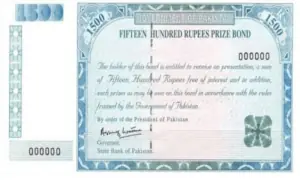This is what Waziristan used to do before terrorism
Before the advent of terrorism, girls in Waziristan would collect corn from the fields, cook it in an open fire and enjoy them together. This tradition, called ‘Adoda,’ in which girls could get out of their houses and enjoy time outdoors has almost disappeared in the region, writes Akhtar Khan Maseed in his book ‘Varke Khabare.’
“We are losing our traditions and culture because of war and displacement. I thought I should document them in the form of a book,” Akhtar Khan Maseed said during the launch on May 6 in Dera Ismail Khan. “Whether someone reads it now or not, the book will remain here and become part of our history. Anyone can read it even after 100 years.”
The title “Varke Khabare,” which is in the Waziri dialect, translates to “lost conversations.”

Maseed hails from Ladha in South Waziristan, but like the hundreds of thousands of people from his area, he too has been forced to move out because of violence. “I am, of course, living away from my hometown, so I am thankful to Facebook for connecting me to friends,” he told Aaj News. “Even if people who are using Facebook did not know, they would ask around from their family members and share the information with me. This way I was able to collect data that was beyond my reach otherwise.”
Maseed’s research took him more than 10 years. He gathered hundred-year-old memories, forgotten names of things, nicknames, and proverbs. The book describes and documents the region’s cultural forms of medicine, games and sports, language, and poetry.
For example, displacement and terrorism forced women to start wearing burqas and the niqab, wiping out the tradition of wearing Ganrr khat a colorful multiple-panel frock with embroidery. Maseed describes the process of making one.
Another tradition that is dying out is “Ghibal” in which farmers help other farmers on their lands. As tractors and other machines became common, this tradition died.

Maseed does not just glorify all aspects of Waziri culture. He takes a balanced view as well. For example, he reports on controversial practices such as Zhagh where a man would fire a gun outside a woman’s house and shout that she was his, forcing her parents to marry their daughter to him. This is because no other man would be willing to marry that woman. The writer thinks this custom has disappeared as formal education levels rose.
Badal has also dwindled; it meant you targeted and killed not just the person who committed a murder but their family members who are famous or well-known in the community.
The book is set in the Urdu Jameel Noori Nastaliq font to make it easier to read.
One of the scholars at the launch said that he found it a “beacon of light in times of darkness.” Others others talked about its importance for the next generation.
For the latest news, follow us on Twitter @Aaj_Urdu. We are also on Facebook, Instagram and YouTube.





















Comments are closed on this story.